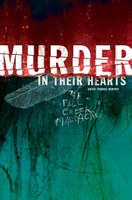
Plan your visit
Murder in Their Hearts
June 30, 2010

In
March of 1824, a group of angry and intoxicated settlers brutally murdered nine
Indians camped along a tributary of Fall Creek. The carnage was recounted in
lurid detail in the contemporary press and the events that followed sparked a
national sensation.
As author David Thomas Murphy notes in the new IHS
Press bookMurder in
Their Hearts: The Fall Creek Massacre,
although violence between settlers and Native Americans was not unusual in the
Old Northwest Territory during the early 19th century, in this particular
incident the white men responsible for the murders were singled out and hunted
down, brought to trial, convicted by a jury of their neighbors, and, for the
first time under American law, sentenced to death and executed for the murder of
Native Americans.
Chairman
of the Department of History and Political Science at Anderson
University, Murphy teaches courses in
Western Civilization, modern German history, the history of modern Europe, and the history of the Holocaust and comparative
genocides. Murphy tackled a different subject in Murder in Their Hearts. In the following interview,
he explains how he came to write about this tragic incident in Indiana’s pioneer past.
 How did you get interested in writing about the Fall Creek Massacre?
How did you get interested in writing about the Fall Creek Massacre?
Through my work as a teacher of history here at Anderson University. One of the courses I teach
regularly is called “Historical Inquiry,” and it’s designed to get
our advanced history majors working on topics that use primary research
materials. One of the most accessible ways to do that, in my experience, is to
have students complete either a genealogical or local history project, and I
always require that. A few years ago, one of my students in the course who came
from the Pendleton area did his project on the Fall Creek Massacre.
I am originally from northern Illinois, and had never heard of the massacre. The paper really intrigued me, and when I looked for more information
on the episode, I didn’t find much. There wasJessamyn West‘s
novel, and there were a few articles, but no archivally based, book-length
study. And that was the beginning of the project. (And, yes, I do thank that
student in the preface.)
In doing your research, did anything surprise you about the event?
A couple of things surprised me. One was the
variety and complexity of the attitudes held toward Native Americans by the
settlers of the early white Indiana
community. There were, of course, a few truly racist Indian haters, and that
didn’t surprise me so much. But I have come to believe that such unalloyed
hostility was anything but the norm. Most of the whites, so far as their
feelings are today discernible, seem to have regarded their native neighbors
with mingled respect, fear, suspicion, tolerance and, at times, sympathy for a
people whom many believed had been treated cruelly by fate. John Johnston, the
Indian agent in the area, for example, had a deep respect for the nobility of
character he believed he saw in many of his charges, while never romanticizing
them or ignoring their sometimes fearsome cruelty in battle.
I was also surprised by the sophistication of the
land speculation business on the frontier. Every settler of any means was
deeply committed to the steady appreciation of land values investment in land
was the stock market of that time and place and the steps taken to exploit
(and manipulate) that generator of wealth seemed like they could have been
taken from the headlines of the last few years.
The unreliable nature of frontier record-keeping
took some getting used to as well. I have done two previous books on aspects of
modern German history, so I know that error creeps into the official record at
times. But I still found in early county records a casual disregard for getting
basic facts straight that surprised me.
How hard was it to reconcile the conflicting accounts of the event?
Sometimes it was not hard at all. For example, it
was pretty easy to use contemporary newspaper accounts, which were carefully
dated, of course, to figure what dates in the transcripts were accurate and
which had to be incorrect.
Other times it was very difficult, and could
finally be resolved only by making judgments about what seemed most plausible.
A dozen conflicting accounts of the tribal origins of the victims of the massacre are out there, and sometimes the same witness will identify them as of
one tribal group at one time and as of a different group later. So, I had to
take the results of modern anthropological research about who was most likely
to have been here in numbers at the time, consider that with the testimony of
the earliest and most knowledgeable sources, and try to decide where the truth
seemed most probably to lie. I believe I came up with a defensible and
plausible solution, but there is no way to say, categorically, that my view on
this or some similar matters is the right one.
Were there books or authors that you drew upon for inspiration as you wrote
your book?
While I was working on this book,Larry McMurtry,
whose writings I admire, published a book called O, What a
Slaughter about interracial violence in the Old West. That book gave me
some ideas about how a person might present such events in a way that was
historically accurate and appealing to readers who, while not experts, are
discriminating, perceptive and educated. I relied a lot upon the Indiana histories of Barnhart and Carmony, upon James
Madison’sIndiana Way, and Drew Cayton’sFrontier Indiana.
And I think anyone interested in writing regional history that is accurate,
sophisticated and written with verve can do a lot worse than considerJohn Bartlow
Martin‘sIndiana:
An Interpretation.
What is your next project?
I am working on two books now. One is a study of
Jewish and Catholic interfaith relations in the West over the last two
centuries. It is really just in the beginning stages and relates to some
earlier research I have done in German history. The other is a book about
literature and education tentatively entitled The Twenty-First Century
Mind-Diet. We’ll see what happens with that.
____________________








